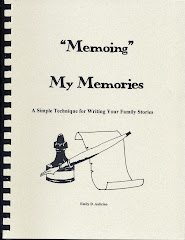How can you be certain that you are writing or have written the story you intended to write? There are two basic approaches: You can put the effort up-front to insure you convey what you intend or you can do the work at the end.
The simplest is to do the work in the beginning by writing an outline, even a loose outline, and following it. If you wait until the end, then you must analyze your work in pieces, asking yourself the same questions: Does this sentence say what I intended it to say; is it relevant to my story?
First Method: Outline
1. Write down your topic or thesis in sentence form. One of the biggest problems with formulating a thesis is the scope of it. Often the idea is too broad (usually as a result of not being specific enough for the desired length of writing) or involves too many or too few things for the story.
A clear, well-defined thesis statement is used to unify the entire piece of writing. It defines the scope of your writing, helping to determine what should and should not be covered. It represents the first step in establishing the document's structure.
.....Example:
........Topic: The person I admired the most is my grandmother.
2. Under that list at least three points you wish to convey.
.....Example:
........Topic: The person I admired the most is my grandmother.
...........I. Features I consider to be most admirable
..........II. Why I chose this person
.........III. Examples of why I admire this person
3. Next add detail to each point.
.....Example:
........Topic: The person I admired the most is my grandmother.
..........I. Features I consider to be most admirable
..............a. Good role model – include examples
..............b. Contributions to or influence upon community/society
.........II. Why I chose this person
..............a. Commendable qualities
..............b. Particular skills
.......III. Examples of why I admire this person
.............a. Influences my life – give examples
.............b. Motivates me to inspire others – examples of what you have done
4. Continue with the outline until you have added each part you wish to include.
5. Check the outline for continuity. Omit what does not fit.
6. Write. (See Writing Tips and Suggestions below.)
7. Compare your outline to the story to see if you omitted information or added extra.
8. Revise your story after letting it set for a while so you can get a fresh view of it. (Repeat items 6-8 until you are satisfied.)
Second Method: Write First
1. Write one sentence or, at most, a paragraph about what you want to convey.
.....Example:
..........The person I admire the most is my grandmother who has inspired me to go farther than I had ever dreamed.
2. Write your first draft using the Writing Tips and Suggestions below, but do not try to write the first draft and revise it at the same time. Set the draft aside for a while.
3. Reread and ask yourself ....
.....a. Why did you choose this topic?
.....b. What information did I intend to convey?
.....c. Does that writing match the what I intended? (Ask yourself this question
after every line, and concentration on one section of your writing at a time.)
.....d. Does the draft include enough detail to satisfy the intended reader?
.....e. Does the text flow smoothly in a clear, logical order?
4. If it does not, refocus and rewrite where needed.
Writing Tips and Suggestions
With either method, the following should be considered when you write.
1. Make every word count. Be aware of what your words mean (Use a dictionary.) and make certain that the meaning aligns with what you are trying to say. Writing is communication; we need to communicate as accurately as possible.
2. Focus on describing moments with feeling and insight, and not on scenery. Your writing must tell more than what the reader could see on the front of a postcard.
3. View the moment through a microscope, not a telescope. You may not want to tell the reader everything you know, so focus in tightly on the most significant details.
4. It is not just about the story you tell, but it is also about how you tell that story. The skillful use of alliteration, allusion, metaphor, and other literary devises separates the good writing from the great.
5. Think about your reader, and write to them, being aware of how they will react to your words.
6. The best writing is unlike anything anyone has ever read, so when you write something especially clever, unique, or “arty,” double check it to make sure it makes sense.
7. Listen to podcasts about grammar, and read books and blogs about it. I recommend the podcasts Grammar Grater and Grammar Girl, the books Writing With Style by Trimble and The Writer’s Reference by Diana Hacker. If you are revising your work and something strikes you as strange, look it up. It will add to your overall knowledge of grammar, usage, and the written word.
8. Reading is the single best way to add to your vocabulary and your knowledge of language and writing.
9. Write with the proper Tone. Tone is the quality in your writing that reveals your attitude toward your topic and the reader. Tone comes from your choice of words, the structure of your sentences, and the order of the information you present. Using incorrect tone can influence the reader incorrectly.
10. Write in the active voice. Active voice makes your writing clearer and more direct. It makes the “doer” in the sentence clear. When you write in the active voice your tone will not sound bureaucratic the way passive voice does.
.....Example:
..........Active voice: I will deliver the cake as soon as you call.
..........Passive voice: The cake will be delivered as soon as you call.








No comments:
Post a Comment